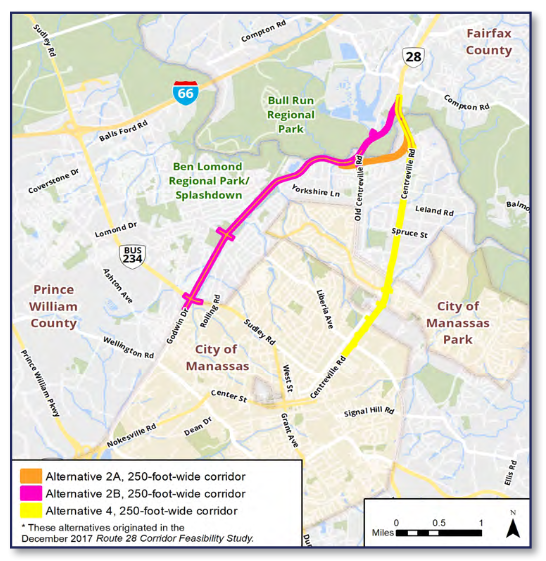
The September 4 op/ed by three local elected leaders (https://www.insidenova.com/opinion/op-ed-our-region-deserves-better/article_7951447e-eec4-11ea-9c7a-cb699f66dc66.html) got one thing right –- the traffic congestion issue on Route 28.
However, their proposed solution is a simplistic, discredited approach — build a new road through our last undeveloped green space, ignore the social, environmental, and sprawl-generating impacts, and hide the traffic analysis that shows worsened congestion at all key intersections if the road is built.
Prince William has built many new roads since 1950. Has that approach solved the problem? It seems delusional to repeat the same action and expect different results.
The op/ed cites “years of public input and countless transportation studies,” but these were all one-sided presentations without a community input process that affected planning. The public meetings held by county transportation staff to date seem more like an attempt to have the appearance of listening, but with the intent of moving ahead with the approach that they had already decided upon.
There is a dramatic difference between a sales job and a conversation. Missing elements of public engagement include:
— Many impacted residents were not effectively notified that the route listed in the Comprehensive Plan had been altered and that over 50 houses would be “taken”
— County staff never proposed the Comprehensive Plan Amendment required to match the Bypass Alignment, allowing for public input
— The alternatives were never actually analyzed with public engagement, because staff were always focused on justifying the Bypass and prematurely stopped working on the federal Environmental Assessment
— Multiple completed Route 28 study reports were hidden from the public for a year or more until just eight days before a critical July 14 BOCS public hearing to approve and advance the Bypass.
When recently elected supervisors visited the area and talked with residents, both they and the community discovered the significance of the Alignment 2B impacts. Surprising this group of affected residents, when viewed through an equity lens, is even more unacceptable.
The op/ed tries to create fear, uncertainty and doubt — but claiming Prince William will “lose” $89 million in funding from the Northern Virginia Transportation Authority (NVTA) is extremely misleading.
Alternative 4 is a better solution, and will justify the funding banked by NVTA to reduce Route 28 congestion. To quickly access the NVTA funding, divide the project into phases, and request funding first to widen the bridge over Bull Run.
The op/ed claims that Alternative 4 is more expensive. However, the Route 28 Feasibility Study over-stated Alternative 4 costs by including the already completed widening of Route 28 in Manassas and Manassas Park and understated Alignment 2B costs, by ignoring flooding issues, the need to also widen Godwin Dr in Manassas, and the risks of the US Army Corps of Engineers rejecting the essential wetlands disturbance permit.
Prince William can get a higher return on investment in high-cost road infrastructure, by leveraging transportation funding to stimulate economic revitalization and create local jobs. Let’s start integrating economic development, land use, and transportation planning, rather than repeat the mistakes of the past.
Albert Einstein is credited as saying “No problem can be solved from the same level of consciousness that created it.” We need 21st Century land use and transportation planning to solve problems that were created in the 20th Century. Now is the time to be innovative in using smart growth and placemaking approaches to create a more livable community with sustainable transportation options.
###
